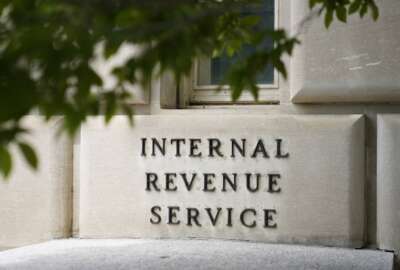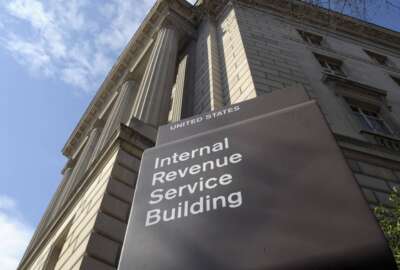IRS touts better customer service through hiring surge, but GAO warns of high attrition
IRS Commissioner Danny Werfel told members of the House Oversight and Accountability Committee on Tuesday that the agency has some “catching up to do,” in order...
The IRS is telling Congress that tens of billions of dollars in modernization funds are translating into better service to taxpayers, as well as more capacity to go after wealthy individuals and companies that aren’t paying what they owe.
The agency has spent about $2 billion of the $60 billion available under the Inflation Reduction Act to rebuild its workforce and its legacy IT systems over the next decade.
IRS Commissioner Danny Werfel told members of the House Oversight and Accountability Committee on Tuesday that the agency has some “catching up to do,” in order to collect taxes owed from wealthy individuals and large corporations, as well as deliver a level of customer experience that taxpayers deserve.
But he said the agency is showing a strong return on its investment so far.
“With the IRA funding, we’re clearly making a difference,” Werfel told lawmakers during a joint hearing of the government operations and federal workforce subcommittee, and health care and financial services subcommittee.
The IRS went from answering about 15% of calls in 2022 to answering 87% of phone calls during this year’s tax filing season. The agency used IRA funds to hire 5,000 additional employees to help answer taxpayers’ phone calls.
The IRS, as of Sept. 23, also hired 745 employees to staff Taxpayer Assistance Centers — about a 31% net increase compared to fiscal 2022 staffing levels.
Werfel said this staffing has allowed the agency to reopen some of these facilities, and provide in-person tax help to 1.6 million individuals with their taxes this year— an 18% increase from 2022.
The IRS is also seeing efforts to crack down on wealthy tax cheats pay off. The agency announced last week that it is recovering $122 million from 100 such cases.
The IRS says that’s just the beginning, and that it has assigned employees to tackle 1,600 similar cases. IRS enforcement is prioritizing cases that involve millionaires who owe at least $250,000 in taxes.
“The IRS for several years was unable to audit a reasonable percentage of complex returns of high-dollar groups, especially wealthy individuals, large corporations, and complex partnerships. But with IRA funding, we are turning that around,” Werfel said.
Werfel said the IRS has come a long way digging out from a period of prolonged budget cuts. He told lawmakers that between 2011 and 2019, the agency’s funding decreased by about 20-25%.
“During that time, it became easier for wealthy individuals and organizations to work to shield their income. We have some catching up to do,” Werfel said.
Werfel said taxpayers should expect to see increasingly better customer experience each year under the Inflation Reduction Act.
“Before we had this funding, each year it seemed to get worse. Those days are over, as long as we can hold on to that Inflation Reduction Act funds and make smart investments,” he said.
GAO’s Director of Strategic Issues Jessica Lucas-Judy told lawmakers that the IRS’ level of service this filing season was “significantly better than in prior years,” but said the IRS needs to put a long-term workforce strategy into focus.
“It does come at a cost, though, because the same people who are answering the phones are the ones who are processing returns and correspondence. And so, we think it’s important that there will be a long-term strategy in place for issues like that,” Lucas-Judy said.
GAO, in a report released Tuesday, said the IRS is using its expedited hiring authority to help fill critical filing season positions more quickly. However, the watchdog said the IRS is seeing a higher-than-average attrition rate for its recent hires.
GAO says the agency is losing nearly a quarter of its new recruits within two or three years.
The watchdog also found the attrition rate for IRS critical filing season staff was relatively high, compared to the agency’s overall attrition rate.
As of June 2022, the IRS told GAO that its attrition rate for employees processing tax returns was about 16% — that’s compared to its overall attrition rate of about 7.5%.
GAO recommends the IRS fully implement its workforce planning initiative, which the agency had delayed because of competing priorities, and delays in implementing necessary IT upgrades. GAO said the IRS expects to complete that workforce planning by March 2024.
Republicans on the committee, however, remain skeptical that the IRS needs to hire its way to staffing levels it hasn’t seen in more than a decade.
Rep. Glenn Grothman (R-Wis.) said the IRS may not need to hire so many frontline employees, because the agency’s workload has become more digital, and less paper-based.
“If we have more computerized returns, we would expect less IRS auditors,” Grothman said. “That’s why we encourage people to file electronically.”
Werfel said more than 90% of tax returns are filed electronically, and that about 15 years ago, it was closer to 50%. However, he said some of those electronic returns are thousands of pages long, and that the IRS is seeing a “spike in the complexity” of returns filed by large, multinational companies.
Subcommittee on Health Care and Financial Services Chairwoman Lisa McClain (R-Mich.) said the “IRS needs to invest in highly skilled experts, not simply hire more employees.”
“The IRS needs to invest in quality, not quantity,” McClain said.
Werfel said the IRS next year will also test out a long-awaited update to the Individual Master File, its authoritative data source for individual tax account data.
Werfel said the IRS will turn on a modernized version of the IMF for the first time in April 2024 – after the tax filing season – and run it in parallel with its legacy system. Werfel said the IRS hopes to have the updated IMF up and running by the following filing season.
“Not only do we need to do it to move to the cloud, and move to a smarter and more manageable architecture, it’s also going to be more secure. It is a keystone for a lot of the efforts,” Werfel said.
Werfel said the IRS’ $60 billion modernization fund is “very, very large and very, very impactful,” but said the IRS needs Congress to support its annual budget to maintain normal operations and “run the trains every day.”
“That’s been underfunded and is still underfunded. In order to run those trains, we have to borrow from the modernization budget to pay for the base budget. As we do that, we raid the modernization budget, and then we might not have enough money,” he said.
Copyright © 2025 Federal News Network. All rights reserved. This website is not intended for users located within the European Economic Area.
Jory Heckman is a reporter at Federal News Network covering U.S. Postal Service, IRS, big data and technology issues.
Follow @jheckmanWFED





